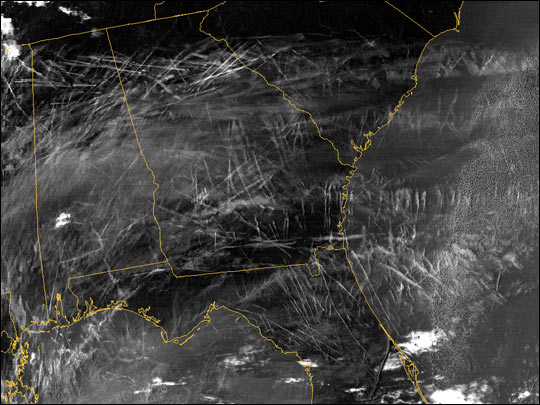Oakland, California-based environmental research group Redefining Progress today released a report entitled Smarter, Cleaner, Stronger: Secure Jobs, a Clean Environment and Less Foreign Oil, laying out the economic benefits which would accrue to the United States by adopting energy policies focusing on clean energy technologies. The report itself -- a national overview (PDF) and reports for the states -- is deceptively slim, as it brings together the results of work done by organizations such as Oak Ridge National Labs, the Apollo Alliance (PDF), the Union of Concerned Scientists, the Renewable and Appropriate Energy Laboratory at UC Berkeley, and others. But what it lacks in original research, it makes up for in its synthesis of mainstream, careful arguments as to the economic results of a shift to cleaner energy. These are not radical, bright green visions; they're the outcome of largely continuing to do what we're already doing, but doing it better. In effect, Smarter, Cleaner, Stronger establishes the new baseline scenario for the next 20 years.
A change to American energy and environmental policies is imminent, no matter who wins in two weeks. We're already seeing it happen in the reality-based world, despite federal intransigence. Insurance companies are increasingly scared about the effects of global warming, and are adjusting their holdings and rates accordingly; state governments in the US are increasingly responding to the call for stricter regulation of energy production and use; and global corporations now face increasingly tough environmental standards in Europe and elsewhere, with spin-off effects at home. We will see more efficient vehicles, greener buildings, and more use of renewable energy in the United States over the next twenty years. The question is not if it will happen, but whether it will happen smoothly.
Smarter, Cleaner, Stronger spells out the result of twenty years of only mildly-discontinuous change: 1.4 million additional jobs; average household saving on energy bills of $1,275 per year; reduced oil imports; carbon emissions cut in half. Most of the steps required for this scenario rely on increased efficiency and smarter planning, not an energy revolution -- steps such as smart grids, more hybrid vehicles, and green buildings. Steps with such obvious and pervasie lifestyle and economic benefits, they are almost over-determined.
We could do worse than in the Smarter, Cleaner, Stronger scenario -- but we'd really have to be pretty stupid to do so. We could also do much, much better -- but we'd have to be pretty daring. The Redefining Progress future is not one of paradigm-shifting molecular nanotechnologies, design biomimicry, or leaps ahead in smart machines, new tools which are quite plausible in the next twenty years. It's not a future of leapfrog nations, new urban visions, or collaborative creation, new systems and models which are already reshaping how the world works. Substantive transformation is possible, is within our grasp, if we have the willingness to reach for it.
Smarter, Cleaner, Stronger is well-worth checking out, particularly the state-by-state data. But don't fool yourself into thinking that it's a radical vision of what's possible. It's not. The world it describes is possible, to be sure; with reasonably wise leadership, it's nearly inevitable. But we could do so much more.
 We
We 

 The European Space Agency has been involved in
The European Space Agency has been involved in 
 When the Caribbean and Florida were hit by multiple big hurricanes last month, the question on the lips of many people was whether global warming was at fault. Climatologists had the scientifically correct answer: hard to say, probably not, but quite possibly a contributing factor. Because the environment is a complex system of system, it's very difficult to pinpoint precise cause-and-effect for specific weather or environmental effects. But that doesn't mean we can't see particular signs of change.
When the Caribbean and Florida were hit by multiple big hurricanes last month, the question on the lips of many people was whether global warming was at fault. Climatologists had the scientifically correct answer: hard to say, probably not, but quite possibly a contributing factor. Because the environment is a complex system of system, it's very difficult to pinpoint precise cause-and-effect for specific weather or environmental effects. But that doesn't mean we can't see particular signs of change. The European Space Agency's
The European Space Agency's  Paul Hawken, author (with Amory Lovins) of
Paul Hawken, author (with Amory Lovins) of  What does $150,000 buy?
What does $150,000 buy? Artist and trained quantum physicist Julian Voss-Adreae creates wood and steel sculptures modeled after proteins. According to a writeup in
Artist and trained quantum physicist Julian Voss-Adreae creates wood and steel sculptures modeled after proteins. According to a writeup in  Régine Debatty joins our roster of WorldChanging contributors. She regularly blogs at
Régine Debatty joins our roster of WorldChanging contributors. She regularly blogs at  From October 11 through November 15, the
From October 11 through November 15, the 
 The New York Times has a
The New York Times has a  If you wanted to build something that would last for centuries, how would you do it?
If you wanted to build something that would last for centuries, how would you do it? (WorldChanging ally
(WorldChanging ally  The
The  It's a recurring element of near-future worlds: the phone (or video screen or implanted chip) that automagically translates spoken phrases to or from your own language, allowing you to converse freely with anyone. No longer shackled to a tour group or three months of an intensive language class, one could travel the world with ease, confident of the ability to communicate with the locals. I suspect this fantasy of a translation device is more prevalent among those of us in cultures less prone to learning multiple languages, but even multilingual global nomads would find occasional technical assistance useful. NEC's pocket spoken-word translation device, as
It's a recurring element of near-future worlds: the phone (or video screen or implanted chip) that automagically translates spoken phrases to or from your own language, allowing you to converse freely with anyone. No longer shackled to a tour group or three months of an intensive language class, one could travel the world with ease, confident of the ability to communicate with the locals. I suspect this fantasy of a translation device is more prevalent among those of us in cultures less prone to learning multiple languages, but even multilingual global nomads would find occasional technical assistance useful. NEC's pocket spoken-word translation device, as  "There are more things in Heaven and Earth, Horatio, than are dreamt of in your philosophies..."
"There are more things in Heaven and Earth, Horatio, than are dreamt of in your philosophies..." Question: can a talk that begins "Ladies and Gentlemen: we're screwed!" leave one feeling hopeful?
Question: can a talk that begins "Ladies and Gentlemen: we're screwed!" leave one feeling hopeful? Dr. Joe at the
Dr. Joe at the  The perennial third place in the cable news market, MSNBC has decided to try something a little different with its election coverage:
The perennial third place in the cable news market, MSNBC has decided to try something a little different with its election coverage:  This is a beautiful site.
This is a beautiful site.